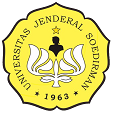The Sesquiterpenoids from the Stem Bark of Dysoxylum excelsum and Their Cytotoxic Activities against HeLa Cancer Cell Lines
Abstract
Sesquiterpenoids belong to a group of terpenoid compounds with interesting structures that are abundant in natural products especially in higher plants. Sesquiterpenoids have a wide variety of bioactivities with great potential cytotoxic activity. The species Dysoxylum excelsum belongs to the Meliaceae family known as higher plant, but only a few sesquiterpenoids have been reported particularly for their cytotoxic activity. Therefore, this research aims to isolate and elucidate the sesquiterpenoids structure from D. excelsum stem bark and examines their cytotoxicity against HeLa cervical cancer cells. Through various column chromatography separations, four known sesquiterpenes namely β-caryophyllene oxide (1), caryophyllenol II (2), humulene dioxide A (3), and guai-6-en-10β-ol (4) were acquired from the n-hexane extract. Compounds 1-4 were isolated for the first time from D. excelsum species. The sesquiterpenoid structures were elucidated according to Nuclear Magnetic Resonance, Infrared, and HR-TOF-MS analysis. The cytotoxicity compounds 1-4 was determined against HeLa cervical cancer cells by examination with the PrestoBlue method and compound 3 exhibited the most potent cytotoxicity with an IC50 value of 160.74 µM.
Keywords: cytotoxic activity, Dysoxylum excelsum, HeLa, Meliaceae, sesquiterpenoid.
Authors agree with the statements below:
- Authors automatically transfer the copyright to the MOLEKUL journal and grant the journal right of first publication with the work simultaneously licensed under a Creative Commons Attribution 4.0 International License (CC BY 4.0).
- Authors are able to enter into separate permission for the non-exclusive distribution of the journal's published version of the work (e.g., post it to an institutional repository or publish it in a book), with an acknowledgment of its initial publication in this journal.













